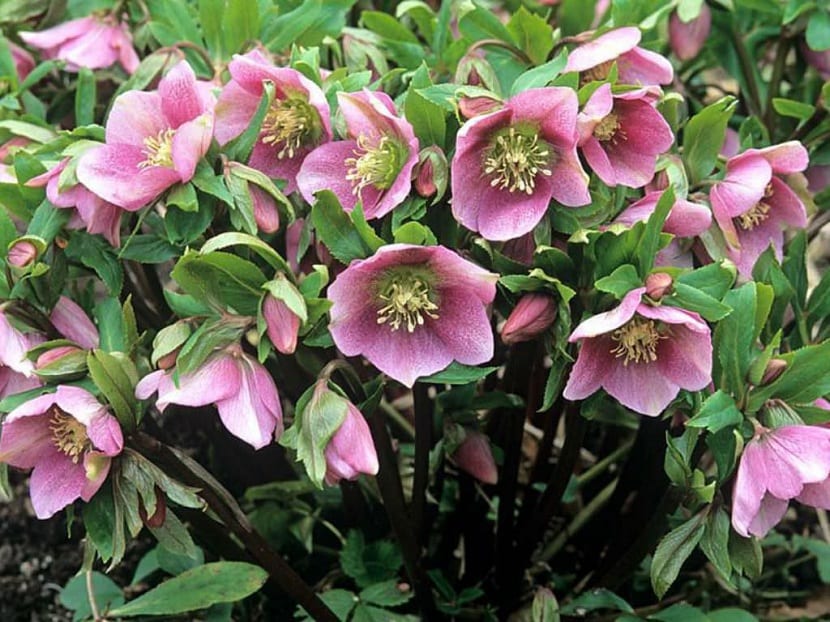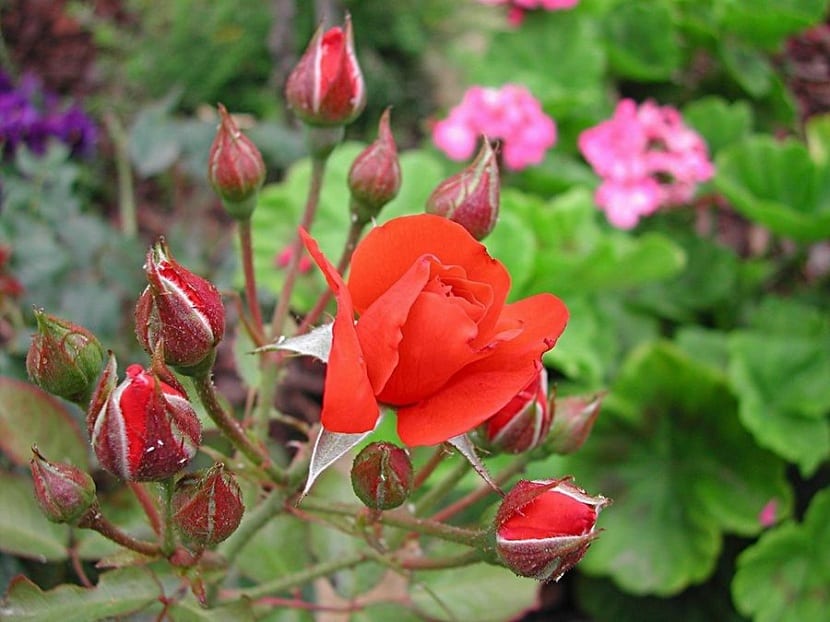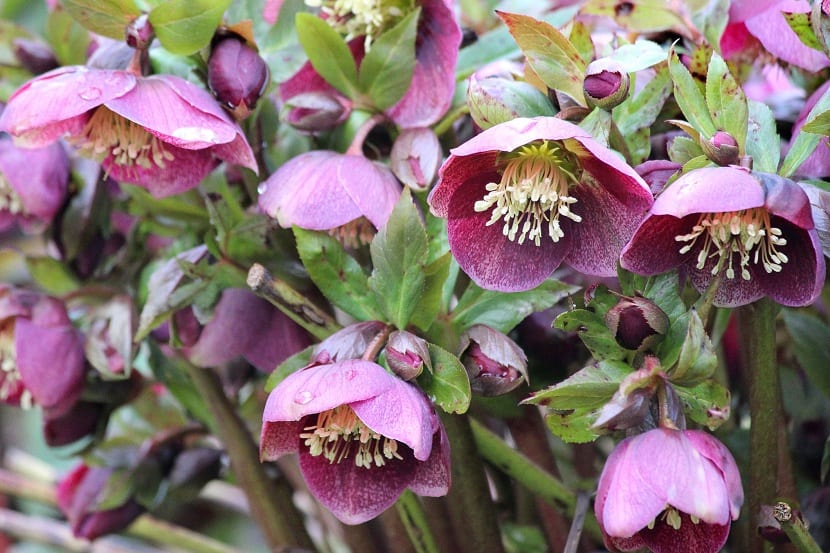
Hellebore It is a genus of perennial plants that are found in Europe and Asia. They are plants that, due to their beauty and ornamental contribution, should be in the gardens. There are some species of this genus such as the acaulescent hybrid that has no stem and has become one of the most popular and frequented in many gardens. In this post we are going to talk about all the characteristics that helleborers have and the necessary care to keep them well and decorate our garden.
Do you want to know everything about eléboros? Keep reading 🙂
Key features

Most helleborers are herbaceous plants that have divided, lobed leaves. They are alternate on the stems and are found in the basal part of the plant. Its flowers are beautifully colored and come from the chalice. Almost all flowers have 5 sepals. The colors can be varied and these flowers fertilize quite large and divided fruits as well as the leaves.
When you look at the fruits you can see how striking they are as they have thin segments. The vast majority of hellebore species have developed large rhizomes but short stems. However, some species may have larger stems and less developed rhizomes. As you can see, there is a great variety within this genus of ornamental plants ideal for garden decoration.
One of the species best known and loved by the public is the Helleborus niger. It is a plant with beautiful white flowers, although there are crops where you can find them in practically all colors. There is also another quite well-known species that grows in the mountains and mountains, which is the Helleborus fetidus. This plant is known as crossbow grass (surely it sounds more familiar to you) and there are also people who call it for the name of marijuana for dummies. This is due to the tremendous resemblance it has with marijuana in the time when it does not have a flower.
The history of hellebore in the world of gardening is very long. Especially in Europe is where more centuries has been used for medical purposes thanks to its medicinal properties. The problem is that all helleborens contain alkaloids that, if ingested in large quantities, can be toxic.
Hellebore uses

In ancient Greek and Roman literature, hellebore is mentioned as one of the most widely used plants in the field of medicine. Although it is not known for sure whether they refer to the same plants that we know today within the genus. Evidence of its cultivation has also been found in western Europe and it can be found naturalized around the ruins of ancient monasteries.
Therefore, there are confusions in the history of these plants that confuse the true whereabouts and original distribution of this plant. What is known almost 100% is that they were used in ancient gardens.
Another of its uses is that of medicine in homeopathy. Hellebore extracts are used for these occasions. In the world of gardening, many gardeners and scientists have been working in the search for numerous hybrids of these species to decorate parks and gardens with different colors.
Depending on the type of hybrid we are dealing with, it has become known as "Christmas Rose" in hybrids with flowers of that color. They are considered the stars of winter, because their flowering colors the shady gardens of the harsh and cold season of the year.
Usually the plants bloom in the December to March stage. Some species are able to start earlier, while others will continue to grow in April and May. The places where the climate is colder, it is common to see how the Helleborers go through the months of May and April, sprouting because of the harsh winter. If, on the contrary, the temperatures in winter are milder, you will be able to enjoy all its colors.
Hellebore care

Since hellebore is highly adaptable, almost all types of gardens can have a perfect hole for these plants. They are capable of developing in different environments, although they are plants that remain unknown to many gardeners. The habit of being able to flower during the winter should be reason enough to be a highly praised and loved type of plant. In addition, to this is added the great resistance and adaptive capacity for many places and the beauty of the multiple colors of the different hybrids of the genre.
If we want to enjoy hellebore in our garden, we must know that they require certain care to stay healthy despite their great resistance. First and foremost, is to keep children and animals away from them, since if ingested they are toxic. At the same time that they are very beautiful, they can cause serious poisoning.
One of the care you should have is that you need an area with exposure to the shade. The direct sun is not a good ally since it can damage the flowers. As for the humidity of the environment, it must be quite high and a climate not very hot. In this way you can always stay fresh and looking good to give ornamental value to the garden.
It is advisable for the soil to be composed of garden soil with 1/3 of peat and good contribution of manure. This will increase the amount of organic matter present and will be able to obtain the necessary nutrients to grow well. If we have chosen to plant it in a pot and it needs a transplant, it is best to do it either in autumn at the end of winter. This way we will be guaranteeing that its survival is good and it is not damaged by low temperatures and winter cold.
Irrigation, fertilization and multiplication
Irrigation must be abundant so that the plant and the soil always remain moist. As we have mentioned before, it is necessary that the humidity is always high.
It needs to be fertilized with manure at least once a year and every 15 days with a mineral fertilizer. This helps it stimulate flowering, which, after all, is what we want from this plant. They do not resist well to drought.
We can multiply it at the end of winter using the technique of division of bushes or from seeds.
I hope that with this information you can color your garden with hellebore.